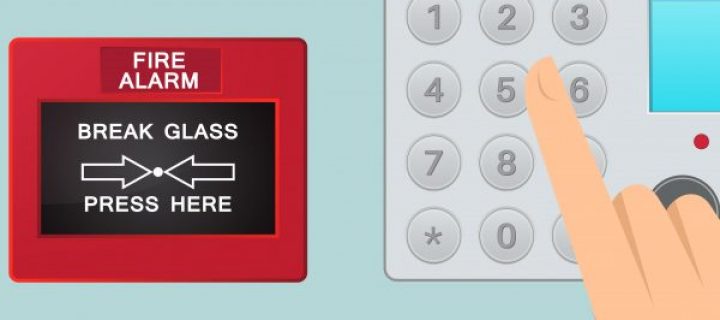The importance of fire alarms is well understood these days, but not every building has the same requirements.
That means there are a number of different fire alarm types that your premises could be fitted with, and while they all have the same aim – alerting people to a fire early enough to help save lives – they all work a little differently.
What are the Different Types of Fire Alarms?
This month at TVF (UK) Limited, we’re going to guide you through four of the main alarm types, providing information on how they work, what the benefits are and any other important information you need to know.
1. Conventional Fire Alarms
The traditional, conventional fire alarm is a system that uses zones to signify where a fire has broken out. Call points are used alongside detectors and when a fire is detected, the fire alarm control panel will light up to indicate the zone where the fire is. This allows the general location of the fire to be established, a useful feature for both the emergency services as well as for those responsible persons to initiate evacuation via the most appropriate route.
A conventional fire alarm will be wired to at least two sounder circuits, utilising any range of audible indicators. Because each call point has to be wired directly to the fire alarm panel, this type of system is better suited for buildings with a more basic layout or smaller premises, reducing the number of points that need to be individually wired in.
2. Addressable Fire Alarms
The addressable fire alarm gets its name from the fact that each call point can be assigned an address on the control panel to help pinpoint the exact location of a fire. This can save time and save lives when it comes to the outbreak of a fire in a larger building, allowing for safe evacuation as well as vital information for local fire and rescue services.
The system operates similarly to the conventional fire alarm aside from the ability to show exactly which call point has been triggered. Because the call points and other devices can be wired into the loop, there is also the potential to trigger sounders and sprinklers if required.
3. Analogue Addressable Fire Alarms
An analogue addressable fire alarm system is sometimes called an intelligent fire alarm system since it does more than simply detect the presence of a fire. The different call points and detectors can be set up and assigned for precision when it comes to location, but they also use their own computer to send information about the general environment (fire, smoke, heat, faults etc.).
An analogue system like this means that faults can be dealt with immediately and false alarms can thereby be reduced, while still alerting with pinpoint accuracy when a fire does break out. It should be noted that some of these systems vary greatly, and will therefore differ in what the control panel can tell you about the input devices connected.
4. Wireless Fire Alarms
A wireless alarm is exactly what it sounds like. Utilising radio frequencies to communicate with call points and detectors, this system needs no wires, which makes it ideal for a number of situations, including for listed buildings, where there is a desire to maintain certain aesthetics or where it would take a long time to wire up a building due to the design.
You can still address individual call points to ensure pinpoint accuracy with this type of system; the signalling is secured across multiple frequencies and you can adapt the system in future without the need for rewiring. This system type must comply with BS EN54-25 standards.
Fire Alarm System Categories
There are six fire alarm system categories outlined in BS 5839-1. This category will have a bearing on what type of system is best suited for your building, business practices and risk level.
The categories are as follows:
Category M
Manual fire alarm system – incorporates no automatic detectors
Category L1
Systems installed throughout all areas of the building
Category L2
Systems installed only in defined parts of the building, including all parts necessary to satisfy the recommendations of the code for a Category L3 system
Category L3
Systems designed to give warning of fire at an early enough stage to enable all occupants, other than possibly those in the room of fire origin, to escape safely
Category L4
Systems installed within those parts of the escape routes comprising circulation areas and circulation spaces, such as corridors and stairways
Category L5
Systems in which protected area(s) and/or the location of detectors is designed to satisfy a specific fire safety objective (other than that of a Category L1, L2, L3 or L4 system)
Category P1
Automatic fire detection systems intended for the protection of property – systems installed throughout all areas of the building
Category P2
Automatic fire detection systems intended for the protection of property – systems installed only in defined parts of the building
Here at TVF (UK) Limited, we provide fire alarm installation for High Wycombe, Watford, Slough and the surrounding region. We can help you establish which type of system is required, tailoring a design to help you protect lives and stay legally compliant. We can even offer fire alarm maintenance to help you maintain your fire alarm.
Find out more about fire alarm systems – call our expert team today on Call 0175 3907 640 and we’ll help with anything you need, from updating your current system to installing a wireless fire alarm system.
Send us your details with our quick quote form, or our main contact form.













